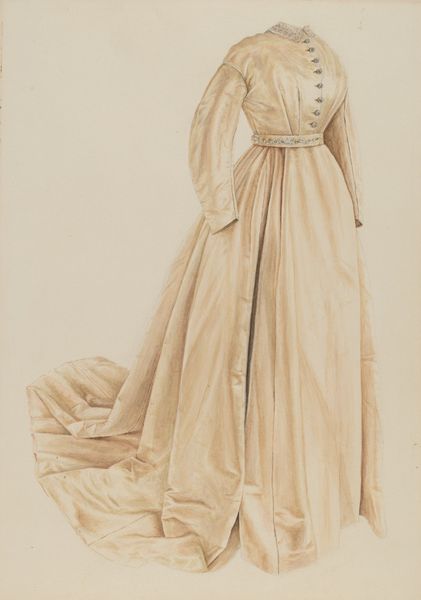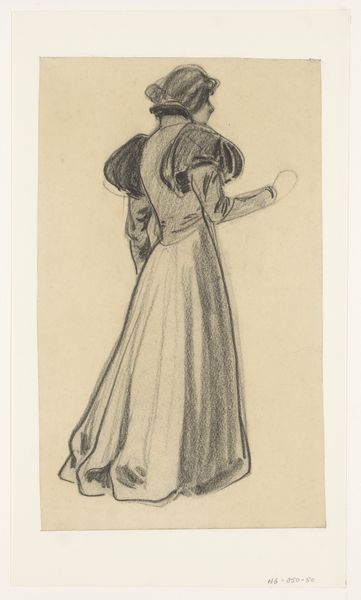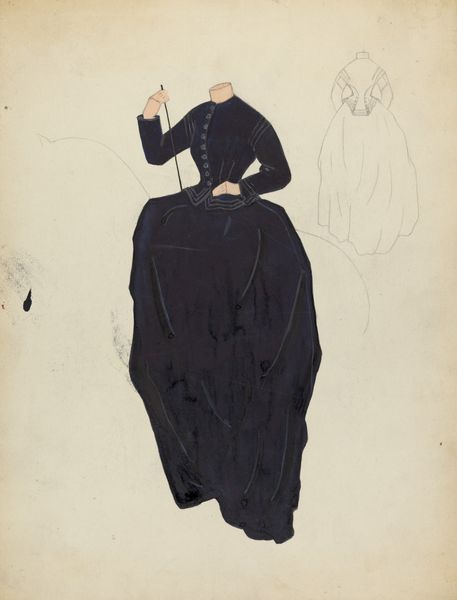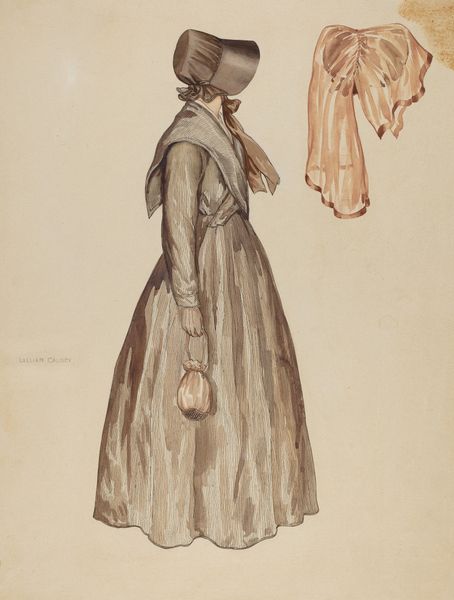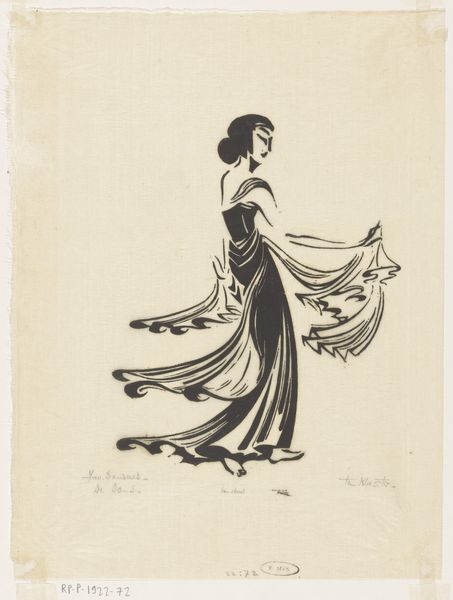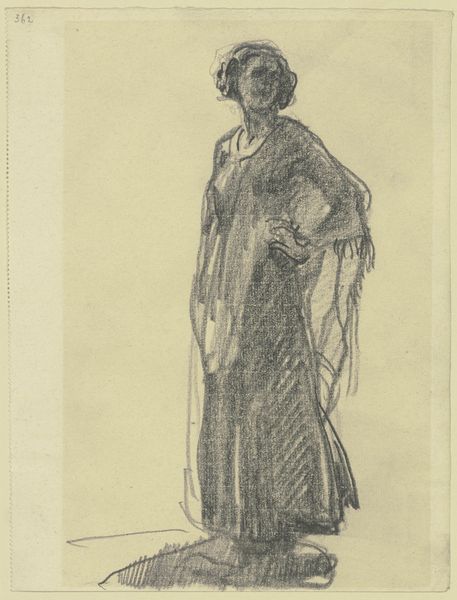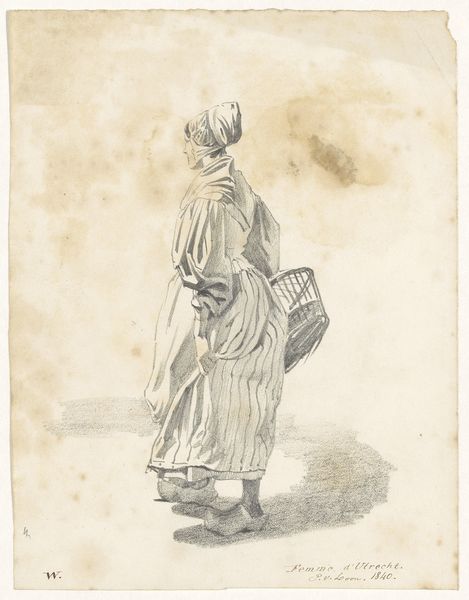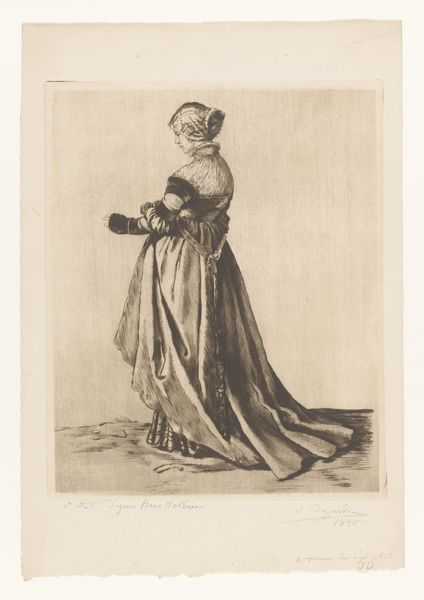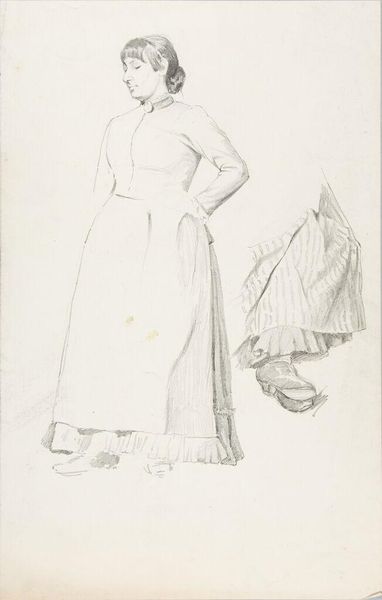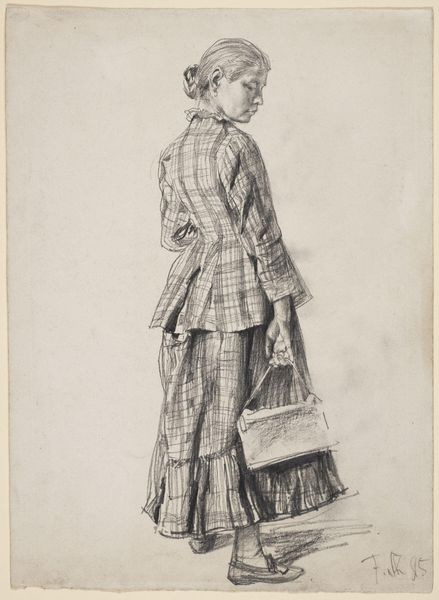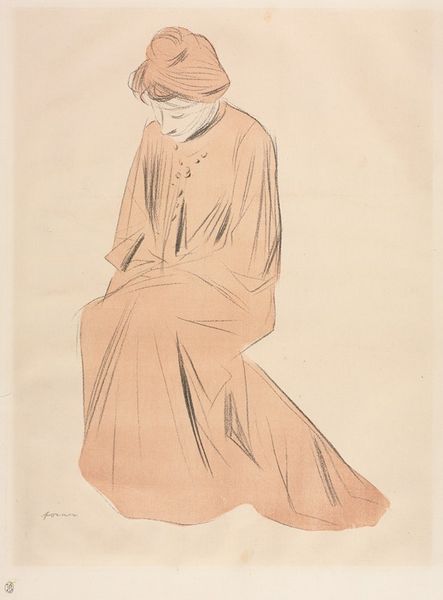
drawing, charcoal
#
portrait
#
drawing
#
german-expressionism
#
charcoal drawing
#
figuration
#
portrait drawing
#
charcoal
Dimensions: overall: 54.1 x 36.5 cm (21 5/16 x 14 3/8 in.)
Copyright: National Gallery of Art: CC0 1.0
Editor: Here we have Konrad Böse's "Kneeling Woman from Behind," a charcoal drawing from around 1909. I'm struck by the woman's posture; there's a sense of both vulnerability and quiet strength. What do you see in this piece? Curator: I see a powerful statement about the role of women in early 20th-century German society. Consider the context of German Expressionism: artists were grappling with rapid industrialization and its impact on individuals, especially those marginalized by the system. Böse’s choice to depict the woman from behind obscures her individual identity, perhaps suggesting her representation of countless anonymous working-class women. How do you interpret her kneeling posture? Editor: I initially saw it as submissive, but your point makes me reconsider. Maybe it's not submission, but rather resilience? Like she's kneeling to perform labor, bearing the weight of societal expectations. Curator: Precisely! Böse's masterful use of charcoal enhances this reading. The dark, heavy lines outlining her figure emphasize her physical presence, while the lighter strokes suggesting the folds of her dress create a sense of movement and activity. Is she resting or is she interrupted at her labor, perhaps in domestic servitude? Editor: I see what you mean. The unfinished sketch-like quality also contributes to this idea of ongoing, relentless labor. The gaze is not on the subject but on the viewer in interaction with a person presented by their subjugated posture. I hadn’t thought about it that way before. Curator: Böse is forcing us to confront the realities of working-class women at the turn of the century. It's not simply a portrait but a commentary on gender, class, and the societal structures that defined their lives. The image, like so much of the art coming out of the early expressionist movements, begs questions. Editor: So, by looking beyond the surface, we find this isn’t just a study of a figure, but a reflection of the societal pressures on women. Curator: Exactly. By understanding the socio-political background, we gain a much richer appreciation for Böse's artistic intent. We began with the sense of a kneeling woman, but, through some thought and study, can also observe how art can inspire awareness and prompt change.
Comments
No comments
Be the first to comment and join the conversation on the ultimate creative platform.
